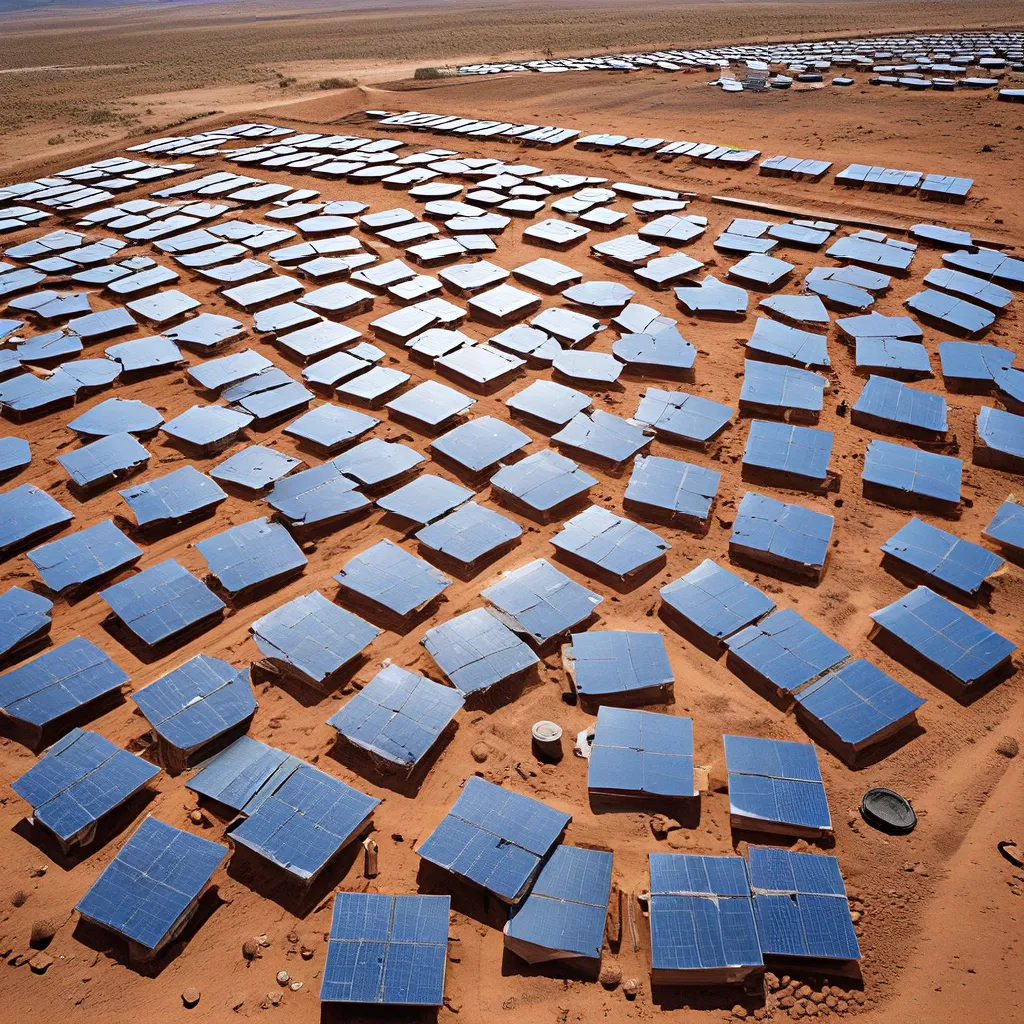
Oh, the irony of our times – we live in a world where water, the very essence of life, is becoming increasingly scarce. As our global population surges and climate change wreaks havoc, the struggle for access to clean, potable water has become a pressing concern. But fear not, my friends, for I believe we have stumbled upon a revolutionary solution that could quench the thirst of our parched planet: solar-driven water treatment.
Harnessing the Sun’s Power
You see, the sun has always been humanity’s greatest ally, a boundless source of energy that has fueled our very existence. And now, we’ve found a way to harness its power to tackle the water crisis head-on. Solar-driven interfacial evaporation (SIE) is an emerging technology that is capturing the attention of scientists and engineers worldwide.
Imagine a world where we could simply place a solar-powered device on a body of water, be it a salty ocean or a polluted lake, and watch as it transforms that water into a clean, drinkable elixir. That’s the promise of SIE – a sustainable, cost-effective, and environmentally friendly solution to the global water shortage.
According to the World Economic Forum, the number of people living in water-scarce urban areas is projected to rise from 933 million in 2016 to a staggering 1.7 billion by 2050. This crisis is not limited to developing nations; even thriving megacities are facing the dire consequences of dwindling water resources. India, for example, is expected to see a significant increase in its urban population experiencing water scarcity.
Harnessing the Sun’s Power
So, how does this solar-driven magic work, you ask? It all starts with the strategic placement of a solar evaporator above a water source. This device, equipped with cutting-edge materials and clever structural designs, selectively heats the water-air interface, rather than the entire body of water. This targeted heating approach is a game-changer, as it dramatically improves the efficiency of the evaporation process.
Traditionally, solar evaporation systems relied on dispersed nanoparticles to absorb solar energy and heat the water. But this method had some limitations, as it required continuous intense solar exposure to heat the entire volume of water. Enter the concept of SIE, which focuses on heating only the water-air boundary, significantly boosting the efficiency.
The key to this innovation lies in the materials used. Researchers have been exploring a diverse array of substances, from carbon-based materials like graphene and carbon nanotubes to metal-based nanoparticles and semiconductors. Each of these materials has its own unique properties that contribute to the overall performance of the SIE system.
For instance, carbon-based materials excel at absorbing solar energy across the entire spectrum, thanks to their intricate molecular structures. On the other hand, metallic nanoparticles like gold and silver leverage a phenomenon called localized surface plasmon resonance, which allows them to efficiently convert light into heat.
Clever Structural Designs
But it’s not just the materials that matter; the structural design of the SIE system is equally crucial. Imagine an evaporator with a vast surface area or one that integrates materials with superior solar absorbance. These strategic designs maximize the capture of solar irradiance, a key factor in efficient photothermal conversion.
Moreover, the structural design plays a vital role in ensuring effective heat transfer from the photothermal materials to the water-air interface. This intimate interplay between the heat-generating elements and the water surface is what ensures that the generated thermal energy is put to good use for water evaporation.
And the innovations don’t stop there. Researchers have also tackled the challenge of salt buildup in evaporators, a common problem that can hinder efficiency. Solutions include the incorporation of hydrophobic coatings, the addition of layers resistant to clogging, and the adoption of designs that avoid direct contact between the evaporator and the water.
As the review article from OAE Publishing highlights, the efficiency and evaporation performance of SIE systems depend on the specific properties of the photothermal materials, such as their light absorption capabilities, thermal conductivity, and resistance to corrosion and fouling.
A Sustainable Future
Imagine a world where clean, drinkable water is as abundant as the sun itself. That’s the promise of solar-driven water treatment. By harnessing the power of the sun, we can tackle the global water scarcity crisis head-on, providing access to fresh water for communities in need, while also reducing our reliance on energy-intensive and environmentally harmful desalination methods.
And the best part? This technology is not just a pipedream; it’s a reality that is rapidly evolving. Researchers and innovators are pushing the boundaries of what’s possible, creating highly efficient, scalable, and cost-effective SIE systems that can be deployed across the globe.
So, the next time you gaze upon the sun, think of it not just as a source of warmth and light, but as a powerful tool in our fight against water scarcity. With solar-driven water treatment, we have the potential to quench the thirst of our planet and usher in a more sustainable future for all.
To learn more about how you can contribute to this revolutionary solution, I encourage you to explore the offerings at Plug n Save Energy Products. Together, we can harness the sun’s power and transform the way we think about water.